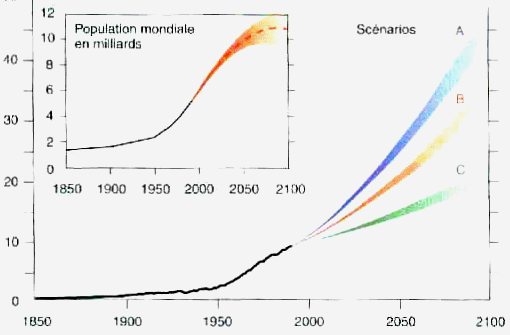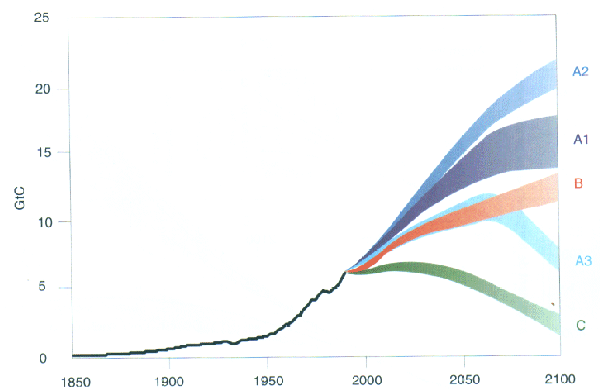Indirect pollution: the greenhouse effect.
Definition of the greenhouse effect.
Repeated floods covering entire regions, particularly violent storms, temperatures playing yoyo… here are three examples of climate change already perceptible in France.
Our planet is sick and it is showing it to us… and this is only the beginning.
Indeed, the greenhouse effect, seriously accentuated by human activity linked to burning fossil fuels, begins to have serious consequences on the global climate. It can be seen that the average air temperature at ground level has increased by around 0,6 ° C since the turn of the century, and that the heat records (recorded by man) are all concentrated in the last years. Historical temperature analyzes show a sharp rise in the average T ° from the 1850s, a few decades after the start of the 1st industrial revolution and the massive combustion of coal.
Temperature evolution since the year 1000. Based on historical records (red), growth of corals and trees and cores extracted from the ice of the poles). Click on the image to enlarge.
Please note: taking into account the localized cooling of certain regions despite global warming (upheaval of micro-climates), the study of the average temperatures of the globe may not be representative of the global warming phenomenon. In fact, the temperature at the North Pole has increased by 2 ° C since 1950. This is much more than the 0.3 ° C readable on the average temperature graph. To have an order of magnitude, the last glaciation (20 years ago) corresponds to a drop in the current average terrestrial temperature of… 000 ° C…
Some rare scientists affirm that the increase in T ° is due to the Sun which would be in an active phase, it is perhaps an aggravating consequence of the increase in temperatures observed at present ... however this is the property of forcing radiative carbon dioxide has long been known to scientists. The increase in average temperatures is therefore necessarily linked to the increase in the concentration of CO2 (and other greenhouse gases often noted: GHG) in the atmosphere.
Indeed any energy ends up dissipating in heat. Higher energy consumption in a closed environment (terrestrial atmosphere) inevitably results in a rise in average temperatures, but would it be so high without GHGs? Nothing is less sure.
Other GHGs have much greater effects on the greenhouse effect than CO2, but fortunately, are widely regulated. CO2 is in much larger quantities because it comes from any combustion of fossil fuels and is responsible for more than half of the greenhouse effect. The following 2 graphs clearly show the correlation between energy consumption (mainly in fossil form) and the amount of carbon dioxide in the atmosphere.

Evolution of global energy consumption (Gtep). Click on the image to enlarge. Source: World Energy Council
Evolution of the rate of carbon dioxide in the atmosphere (GtC). Click on the image to enlarge. Source: World Energy Council
Note: evolution according to 5 more or less ecological scenarios (A Strong growth, B current reference, C ecological) A1, A2 and A3 indicate more or less substitution for fossil fuels. (Source: World Energy Council). Click on the image to enlarge.
The scenarios are alarming given the population growth and development, the carbon content may double in the next 20 years with the dramatic consequences discussed below.
Fortunately as shown on this page, the industrialized countries are awareness of this serious problem and are setting emission reduction targets for international meetings (Kyoto in 1997, 2001 in Bonn). But these objectives be met? And punish those who do not respect? Here are the results and decisions from the Kyoto Protocol.
Be that as it may, it is especially vis-à-vis demographically important and energetically emerging countries, such as China or India, that decontamination measures will have to be taken. Indeed if these follow, rightly by virtue of the principles of equality, our example of the 19th century by burning coal (the cheapest and most available energy) excessively, they will reject in 30 years as much CO2 and pollutants than what industrialized countries have rejected for 200 years! In order to protect humanity, industrialized countries must offer them energy solutions at reduced cost and polluting emissions.



